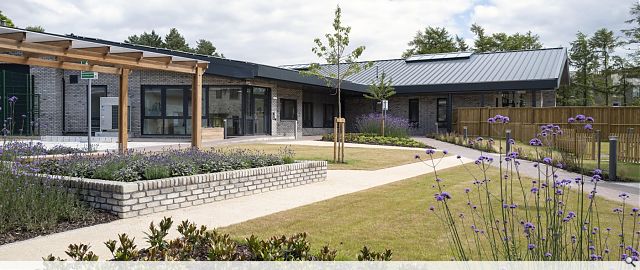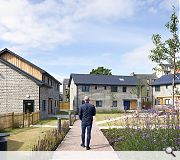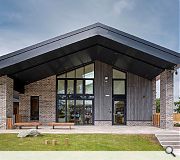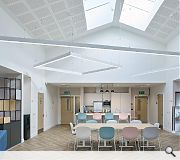The Bella Centre
"The Bella Centre” Community Custody Unit is the first of its kind in the UK. It provides safe and shared accommodation for sixteen women who will benefit from closer community contact and access to local services, instilling independence which is critical for successful reintegration. Unlike traditional prisons, a trauma informed design approach ensured that the buildings feel domestic and homely, organised around a central wellbeing garden.
A central community hub provides educational and community activities and administrative facilities for thirty staff. The buildings have been carefully designed to blend into their surrounding context without typical ‘prison’ features, therefore reducing any negative connotations and stigma for the building users and local community. This innovative project deviates from the Scottish Prison Service’s (SPS) traditional prison model by encouraging community reintegration as a means of reducing re-offending rates.
Oberlanders Architects were invited to interrogate an existing ‘baseline’ building design for this project and develop it, bringing their expertise to enhance and create a building which balanced security and safe functionality with wellbeing and trauma informed design. It was essential that the spaces were designed to be nurturing and removed any sense of intimidation as these buildings would also be visited by young children. Therefore, natural light, views to the garden, calming tones and colours for the interior design and quality rich spaces were imperative.
Bespoke birch faced ply joinery allows the women and their children to display artwork and other mementos. Soft furniture and high ceilings offer areas for contemplation and reflection. Child height lockers with colourful tags are visible upon arrival and immediately give visitors control of where to put their belongings in contrast to being greeted by a traditional x-ray scanner. The architectural features create an environment that mimics the facility’s rehabilitative and therapeutic aspirations. Architectural elements are used for wayfinding, including treated timbers and lighting to remove formal signposting.
House blocks simulate a regular cluster of family homes, with landscaped gardens and courtyard spaces. The houses are designed with the character of a domestic dwelling to enhance the resident’s independence and life skills. Realising the project’s full potential within budget and time constraints demanded a timber kit construction method for the house buildings, also allowing for a reduction in the embodied carbon footprint, further aided by solar panels on the building’s roofs. Longevity was considered through the inclusion of robust fixtures and fittings and to create long term cost efficiencies
Back to Public
- Buildings Archive 2024
- Buildings Archive 2023
- Buildings Archive 2022
- Buildings Archive 2021
- Buildings Archive 2020
- Buildings Archive 2019
- Buildings Archive 2018
- Buildings Archive 2017
- Buildings Archive 2016
- Buildings Archive 2015
- Buildings Archive 2014
- Buildings Archive 2013
- Buildings Archive 2012
- Buildings Archive 2011
- Buildings Archive 2010
- Buildings Archive 2009
- Buildings Archive 2008
- Buildings Archive 2007
- Buildings Archive 2006






